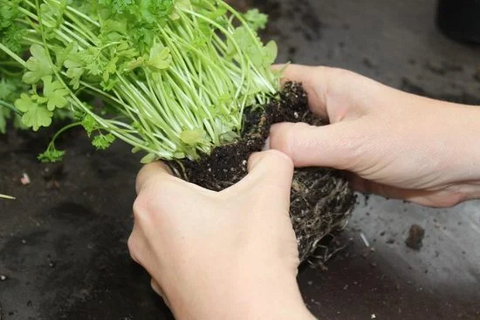One of the most rewarding experiences for a gardening enthusiast is sowing seeds and witnessing the journey of tiny sprouts transforming into thriving, bountiful vegetables. If you're new to gardening or looking to optimize your growing space, raised garden beds offer an ideal solution. In this blog, we'll explore the process of growing vegetables in raised garden beds, from seed to a bountiful harvest, while offering valuable tips to ensure your green thumb's success.The following content also has some reference value for raised garden beds.
Why Raised Garden Beds?

Raised garden beds are elevated containers that contain soil for gardening. They offer several advantages, including:
- Improved Drainage: Raised beds drain excess water effectively, preventing root rot and ensuring your plants receive just the right amount of moisture.
- Better Soil Control: You have complete control over the soil you use in your raised beds, allowing you to tailor it to your plant's specific needs.
- Reduced Weeding: Raised beds typically have fewer weeds, saving you time and effort.
- Extended Growing Season: The soil in raised beds warms up more quickly in the spring, allowing you to start planting earlier in the season.
1. Selecting the Right Location

Before you start sowing seeds, choose the right location for your raised garden bed. Consider these factors:
- Sunlight: Most vegetables require at least 6 hours of direct sunlight daily, so pick a spot with ample sunlight exposure.
- Accessibility: Ensure that your garden bed is easily accessible for planting, watering, and harvesting.
- Proximity to Water Source: It's essential to have a water source nearby for easy irrigation.
2. Choosing the Right Seeds
Selecting the seeds is a critical first step in the gardening process. Consider the following factors:
- Climate: Choose vegetable varieties that are suitable for your climate and growing season. Some are more heat-tolerant, while others thrive in cooler weather.
- Space: Be mindful of the available space in your raised bed. Some plants, like tomatoes and zucchini, need more room to grow, while others can be planted more densely.
- Companion Planting: Research companion planting to determine which vegetables grow well together. Some combinations can deter pests and improve growth.
3. Preparing the Soil

The soil in your raised garden bed is the foundation for healthy plant growth. Here's how to prepare it:
- Clear Debris: Remove any weeds, rocks, or debris from the bed.
- Amend the Soil: Mix in compost or organic matter to enrich the soil with nutrients.
- Level the Surface: Make sure the surface of the soil is even, allowing for uniform water distribution.
4. Planting Your Seeds
Now that your soil is ready, it's time to sow your seeds. Follow these steps:
- Create Rows: Depending on the size of your raised bed, create rows with adequate spacing for each vegetable type.
- Planting Depth: Follow the seed packet instructions for the appropriate planting depth for each type of vegetable.
- Label Rows: Use markers or labels to identify the rows of different vegetables.
- Water Thoroughly: After planting, water the bed thoroughly to ensure good seed-to-soil contact.
5. Caring for Your Plants
Successful gardening is not just about sowing seeds; it's also about nurturing your plants. Here are some care tips:
- Regular Watering: Monitor the moisture level in the soil and water as needed. Using a drip irrigation system or soaker hose can support maintaining consistent moisture levels.
- Weed Control: Keep the bed free from weeds, as they can compete with your vegetables for nutrients and water.
- Mulching: Apply mulch around your plants to retain moisture and reduce weed growth.
- Fertilizing: Depending on the type of vegetables, consider fertilizing with a balanced, slow-release fertilizer.
6. Pest and Disease Management
Pests and diseases can threaten your vegetable garden. Here's how to manage them:
- Companion Planting: As mentioned earlier, some plant combinations can deter pests naturally.
- Inspect Regularly: Regularly check your plants for signs of pests or disease. Early detection is key to effective management.
- Organic Pest Control: Consider using organic pest control methods like neem oil or introducing beneficial insects.
7. Supporting Your Plants
As your vegetables grow, some may require support. For example, tomato plants benefit from stakes or cages to keep their fruit off the ground. Be prepared to provide the necessary support when your plants reach the appropriate stage.
8. Harvesting Your Bounty
The ultimate reward for your efforts is the harvest. Here are some tips for successful harvesting:
- Timing: Harvest your vegetables at the right time. Different vegetables are ready at different stages of maturity.
- Gentle Handling: Be gentle when picking your produce to avoid damaging the plant or fruit.
- Enjoy the Fruits of Your Labor: Take pleasure in your homegrown, fresh, and nutritious vegetables.
Conclusion

Growing vegetables in raised garden beds is a delightful and rewarding endeavor. By selecting the right seeds, preparing the soil, nurturing your plants, and managing pests, you can turn your raised bed into a thriving garden of delicious produce. Follow these tips and processes, and you'll soon be savoring the taste of your green thumb's yield right from your garden.









